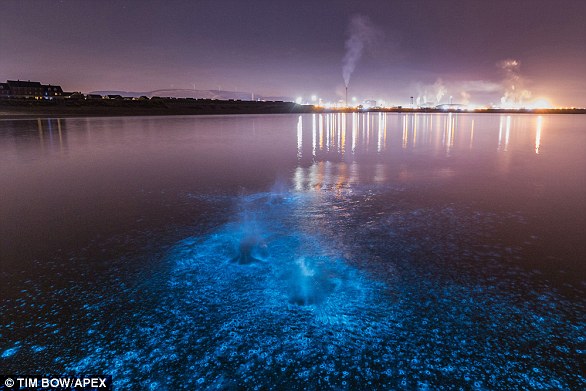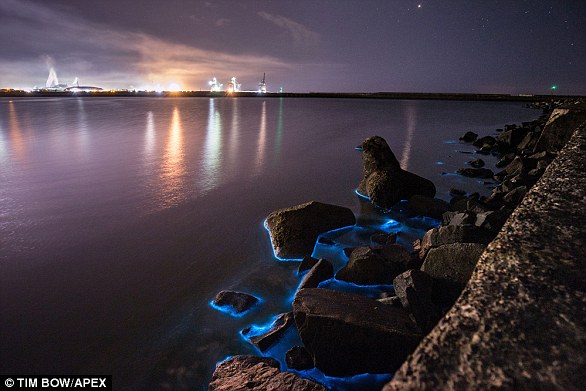Eerily beautiful nighttime footage shows bright blue dolphins swimming through bioluminescent waters off California coast
Eerie nighttime footage shows bright blue dolphins swimming through bioluminescent waters off the coast of California
- A small group of dolphins were seen glowing in clear blue waters off the coast of Southern California due to bioluminescent algae
- Bioluminescence is a relatively common phenomenon in California and occurs due to the presence of dinoflagellate algae
- Red tides and bioluminescent waves have been spotted all along the Southern California coast over the past month
A small group of dolphins were caught on camera zipping through glowing blue bioluminescent waves off the coast of Newport Beach. CaliforniaMonday night.
Images of the ethereal dolphins were captured by Newport Coastal Adventure photographer Mark Girardeau, who was on a boat at night and filmed the bioluminescence around their motor.
At least three dolphins were captured circling the boat, zooming freely through the water and lighting it up with lines of electric blue.
The luminous glow is caused by dinoflagellate algae, which turns ocean water red during the day but glows blue at night.
Red tides and bioluminescent waves have been spotted all along the Southern California coast over the past month.
A small group of dolphins were caught on camera Monday evening zipping through glowing blue bioluminescent waves off the coast of Newport Beach, California.
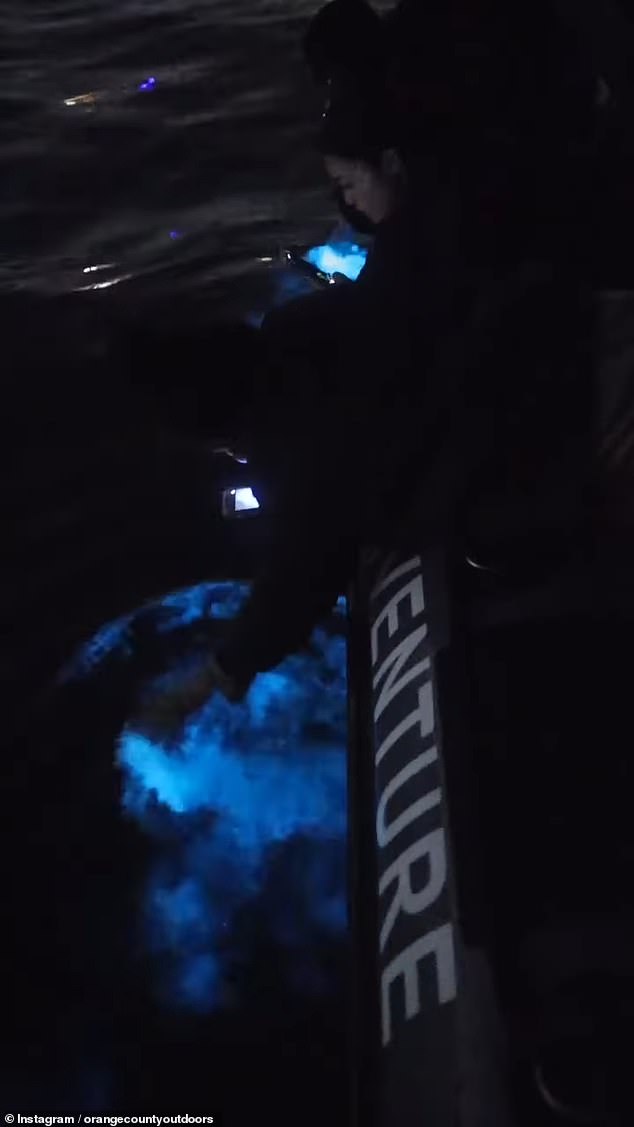
The luminous glow is caused by dinoflagellate algae, which turns the ocean water red during the day, but glows blue at night

A bioluminescent glow in Newport Beach, California on September 12
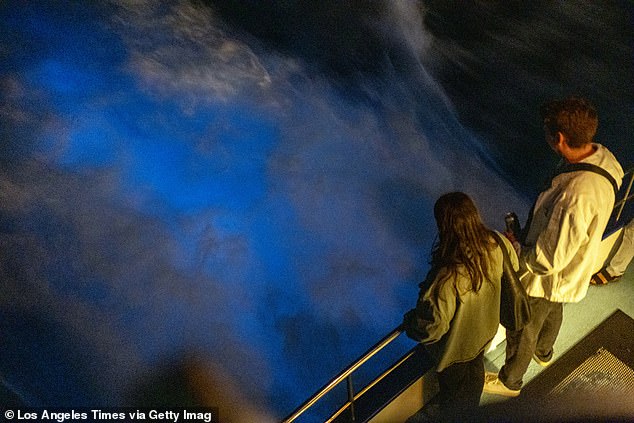
Boat passengers look out at the Bioluminescence on the California coast
The photosynthetic dinoflagellates are technically small organisms that drink in the ocean – also called phytoplankton.
Dr. Drew Lucas, associate professor at the Scripps Institution of Oceanography at UC San Diego, said: ‘They are similar to plants in that they photosynthesize, but they differ from most plants in that they move around a group. They can swim.’
The organisms’ blue glow only becomes visible at night, when they are physically disturbed by actions such as breaking waves, splashing boats and dolphins.
“That flash of light for each individual cell isn’t very bright, but if there are a lot of them in the water they can really light up the waves and lead to a pretty bright glow,” Lucas said.
The glowing effect, often called ‘the fire of the sea’, results in a distinctive blue flash that lasts just 100 milliseconds.
The algae may be beautiful to look at, but red tides also produce toxins that can be harmful to humans. Most side effects from inhaling the red tide are minor and temporary and include coughing, sneezing, and watery eyes.
However, the toxins are much more potent for some fish and shellfish, which, if consumed by humans, can cause illness.
Last week is one photographer captured bioluminescent plankton lighting up a California beach with a bright blue glow as boogie boarders surfed the waves.
Photographer Patrick Coyne captured a group of surfers grabbing their boogie boards in Huntington Beach and heading out into the open water to experience the glow of the Pacific Ocean for themselves.
“The bio continues to give us a great show and we captured more footage at Salt Creek Beach! We originally stopped at Crescent Bay where there were some glowing waves, but they weren’t very clear so we checked out other beaches,” Coyne wrote on Instagram.
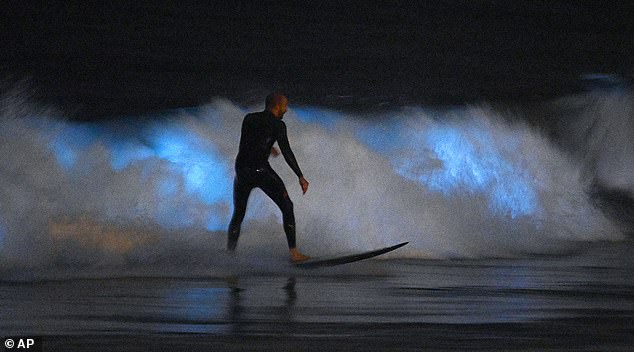
A group of surfers grabbed their boogie boards in Huntington Beach and took to the open water to experience the glow of the Pacific Ocean for themselves

